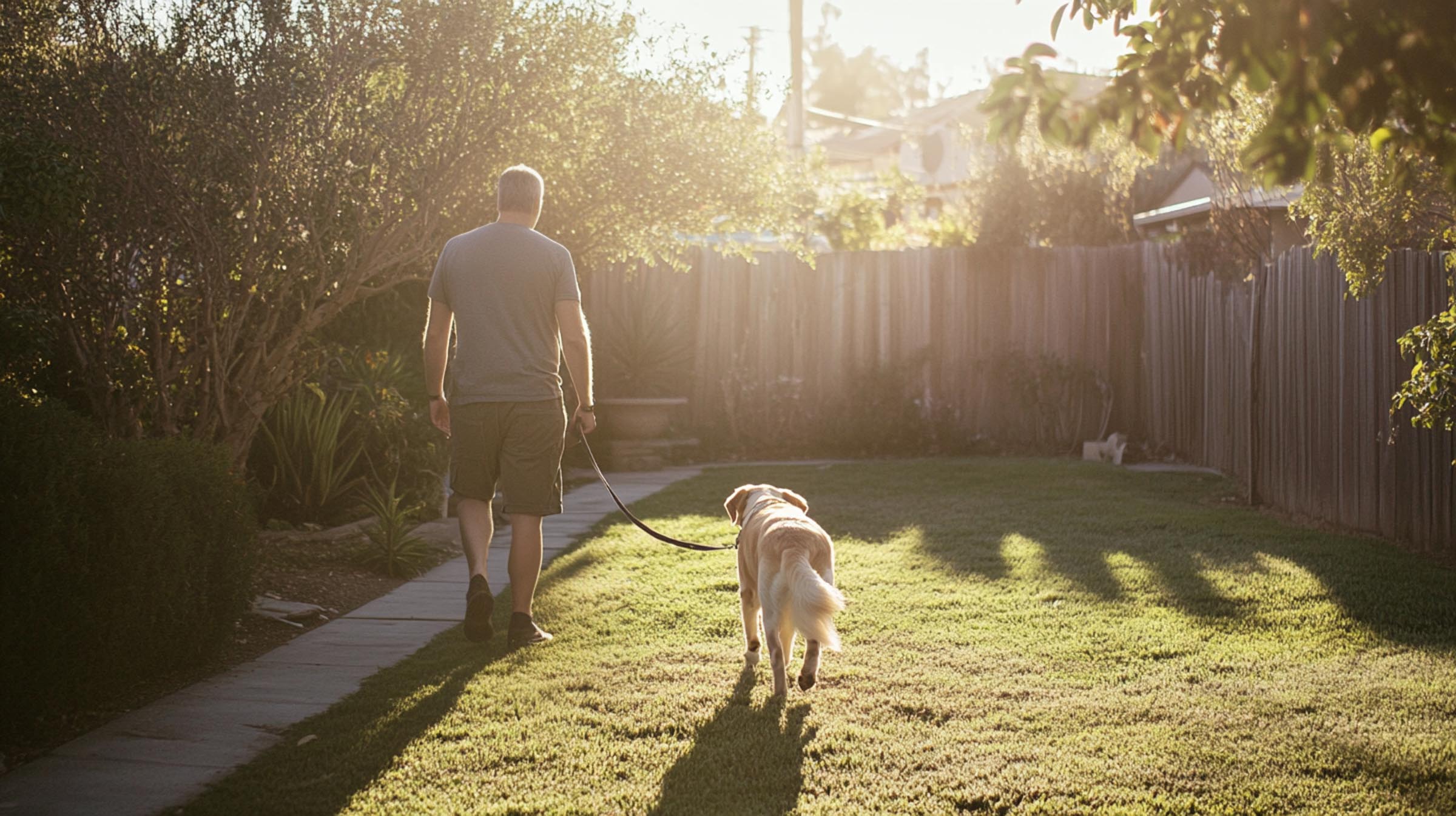The “Watch Me” command is a powerful tool to capture and maintain your dog’s attention, especially in distracting environments. Teaching your dog to focus on you when you say “Watch Me” is an excellent way to prevent pulling, as it redirects their focus from distractions to you. This is particularly useful during walks when your dog may become overly interested in other dogs, people, or sights that can lead to pulling.
Step 1: Start in a Quiet Environment
Begin training in a low-distraction environment, such as your living room or a quiet room in your house. This ensures your dog is focused on learning and not overwhelmed by external stimuli.
Step 2: Grab Your Dog’s Attention
- Hold a Treat in Front of Your Dog's Nose: Choose a high-value treat that your dog loves. Hold it between your fingers right in front of your dog’s nose to get their attention.
- Move the Treat to Your Face: Slowly move the treat from your dog’s nose up toward your face, between your eyes. This action naturally draws their attention from the treat to your face.
Step 3: Mark the Behaviour
The moment your dog makes eye contact with you—no matter how briefly—mark the behaviour by saying “yes” or using a clicker. Immediately follow this with a reward.
Pro Tip: Timing is critical. You need to reward your dog right as they make eye contact to ensure they associate looking at you with receiving a treat.
Step 4: Introduce the Verbal Cue “Watch Me”
Once your dog consistently follows the treat and makes eye contact, introduce the verbal cue.
- Say “Watch Me”: Before you move the treat toward your face, say “Watch Me” in a clear and cheerful tone.
- Wait for Eye Contact: As your dog makes eye contact, mark the behaviour with “yes” or a click, and reward with the treat.
- Repeat Several Times: Practise this step multiple times until your dog starts associating the verbal command with looking at you.
Step 5: Increase the Duration of Eye Contact
Once your dog reliably looks at you when you say “Watch Me,” gradually increase the length of time they hold eye contact before rewarding them.
- Start with 1-2 Seconds: Begin by waiting just a second or two before marking the behaviour.
- Gradually Increase the Time: As your dog improves, wait longer—up to 5 seconds or more—before giving the reward.
- Always Reward Consistency: Be patient and reward your dog consistently as they improve their ability to hold eye contact for longer periods.
Step 6: Add Distractions Gradually
After your dog understands the “Watch Me” command in a quiet environment, start adding distractions slowly. Move to slightly busier areas, such as your backyard, and practise the command there.
- Use Treats to Reinforce: In environments with more distractions, continue using high-value treats to maintain your dog’s attention.
- Increase the Level of Distraction: Gradually expose your dog to more distracting environments (like a park or sidewalk) as they improve their focus on you.
Step 7: Use the “Watch Me” Command During Walks
Once your dog is reliable with the “Watch Me” command in various environments, start using it during walks. Here’s how:
- Anticipate Distractions: When you see something that might make your dog pull (like another dog or a squirrel), say “Watch Me” to get their attention before they start pulling.
- Reward Consistently: Each time your dog makes eye contact after hearing “Watch Me,” mark the behaviour and reward them. Over time, your dog will begin looking at you more naturally, without the need for frequent rewards.
Troubleshooting

- If Your Dog Doesn’t Make Eye Contact: If your dog struggles to look at you, you may need to make the treat more enticing or move it more slowly toward your face. Be patient, and gradually increase the difficulty as your dog gets better.
- If Your Dog Gets Distracted: If your dog is too distracted, move to a quieter environment and practice until they’re ready for a higher level of distraction. You can also use higher-value treats in more challenging settings.
How "Watch Me" Helps Prevent Pulling On Leash
- Prevents Distraction: “Watch Me” is particularly effective for dogs that get easily distracted by their environment. By redirecting their focus to you, it reduces the likelihood of them pulling to reach something they’re excited by or anxious about.
- Maintains Engagement: Using the “Watch Me” command during a walk ensures that your dog stays connected with you. Instead of tuning out and getting overly focused on their surroundings, they learn to check in with you regularly.
- Immediate Redirection: When you anticipate a pulling situation—like when your dog spots another dog—you can use “Watch Me” to preempt the pulling and keep their attention on you.
Benefits of the “Watch Me” Command
- Improved Focus: Teaching your dog to make eye contact builds their ability to focus on you even in distracting environments.
- Better Leash Control: Using “Watch Me” prevents pulling by redirecting attention away from the distraction, ensuring a calmer walk.
- Strengthens Bond: Regular use of this command on walks reinforces your leadership and strengthens the bond between you and your dog.
Conclusion
Incorporating the “Watch Me” command into your dog’s leash training is a highly effective way to prevent pulling and distractions. It’s a simple but powerful tool that enhances your dog’s focus, making walks more manageable and enjoyable for both of you. By practising consistently and patiently, your dog will learn to look to you for guidance, even in the most exciting or distracting situations.




Leave a comment
This site is protected by hCaptcha and the hCaptcha Privacy Policy and Terms of Service apply.